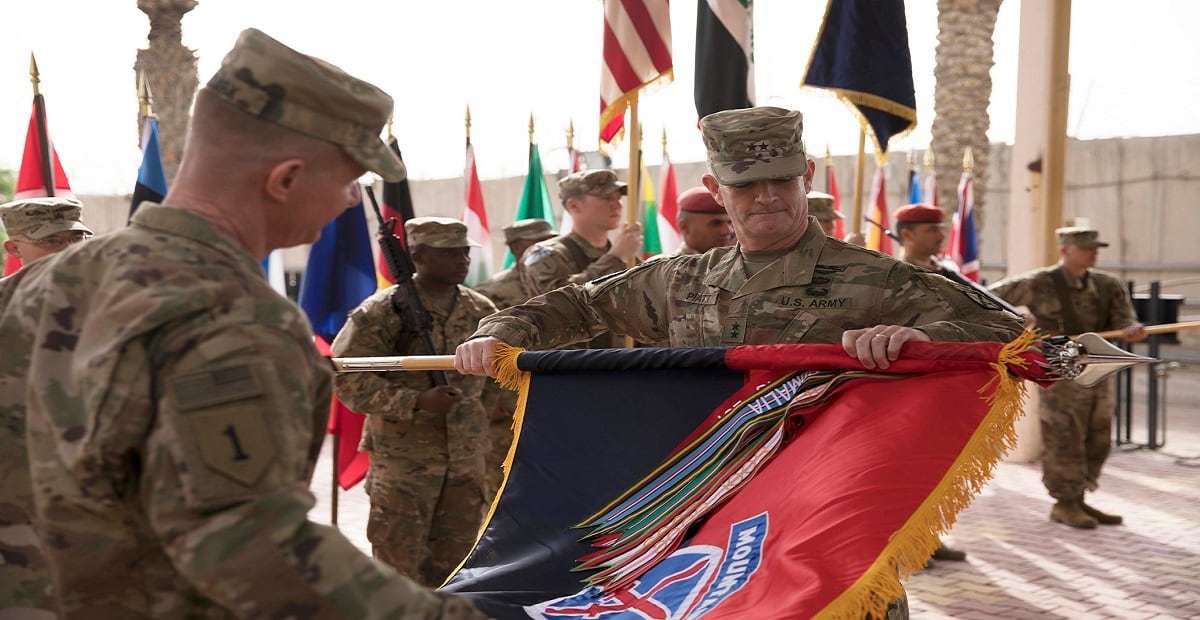Fifteen years after the U.S. launched Operation Iraqi Freedom, the remaining U.S. troops deployed there are still needed, the spokesman for U.S. operations in western Iraq said Tuesday.
Marine Corps Col. Seth W. B. Folsom was one of the 150,000 U.S. and coalition troops who initially crossed into Iraq 2003 and is now the commander of Task Force Lion, the continued U.S. effort in Anbar province.
“My Marines and I came to Iraq in 2003 because we thought it was the right thing to do and we served honorably,” Folsom said Tuesday at press briefing with reporters at the Pentagon.
“Unlike a lot of people out there right now, I’m not really interested in engaging in the same sort of self-loathing that a lot of people are doing today on the anniversary. The simple fact is this: the war has changed out here. It’s not even the same war anymore.”
RELATED

U.S. and coalition ground forces began moving into Iraq on March 21, 2003, to oust former Iraqi president Saddam Hussein and prevent his regime from providing chemical weapons to terror groups. After U.S. forces captured Hussein, the chemical weapons program was found to be abandoned.
After the invasion, the U.S. mission in Iraq lasted for eight years until troops were withdrawn in 2011.
The Iraqi government asked U.S. forces to return there in 2014. By mid-2014, large swaths of Iraq were under attack by the Islamic State, also known as ISIS, which had easily defeated Iraqi security forces whose capabilities had eroded after the U.S. left.
Airstrikes on Islamic State targets began late that summer; the first U.S. soldiers returned there in fall of 2014 and launched a massive Iraqi military train, advise and equip program throughout Iraq.
Victories in Tikrit, Ramadi, Hit, Bayji, Mosul and other cities followed, and in December 2017 Iraq announced the defeat of ISIS. The U.S. still conducts regular airstrikes against pockets of ISIS fighters in Anbar province, most recently in the vicinity of the city of al Qaim, along the Syrian border.
“I do believe U.S. forces are needed here,” Folsom said. “Even though western Anbar and the entire country has been liberated. What we are trying to do with the [Iraqi Security Forces] is help them consolidate their gains. We are at a critical juncture right now,” he said. “If we don’t continue our work to professionalize them as a military, then we risk as return to the conditions as they were in 2014.”
Twenty-one service members have been killed in Iraq since U.S. forces returned there in 2014, including seven airmen who died last week in a U.S. Air Force HH-60 Pave Hawk crash. The helicopter was on a routine transit from an outpost at al Qaim that U.S. forces share with Iraqi security forces, Folsom said.
Folsom has served in Iraq three times.
A total of 4,411 service members were killed in Iraq during operations there between 2003 and 2011, according to DoD reports. The Pentagon will no longer say how many forces are serving in Iraq, using an unchanged, blanket number of about 5,200 troops when queried.
Tara Copp is a Pentagon correspondent for the Associated Press. She was previously Pentagon bureau chief for Sightline Media Group.




